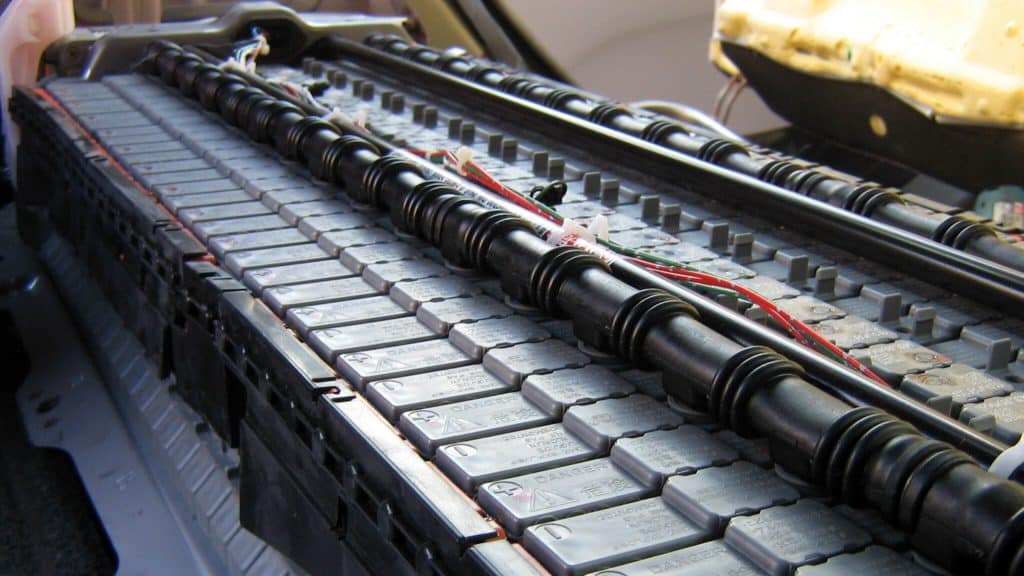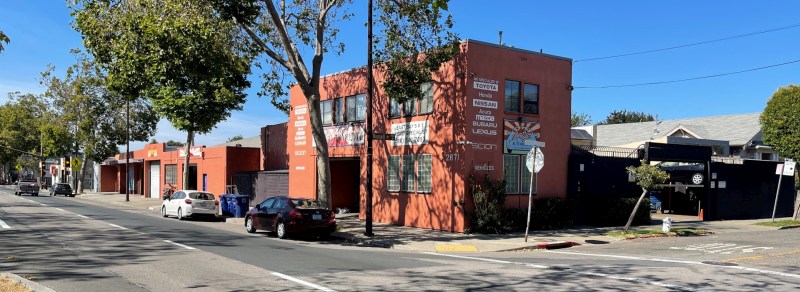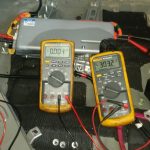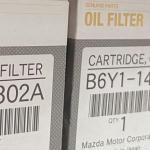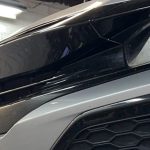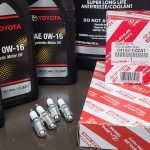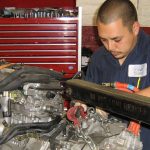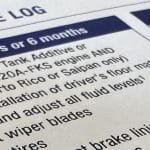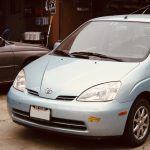Very few auto repair shops have replaced as many hybrid battery packs as Art’s Automotive. More hybrids and EVs have been sold in California than any other state in the country, and the East Bay is especially hybrid dense. Right after the first generations of the Prius were released, we realized that Berkeley had a lot of early-adopters, and we should master this technology, so we did.
In the early days many local shops would refer their customers in need of a replacement hybrid battery packs to us, but these days, most shops are willing to do their own high voltage repairs. While there are many places near Berkeley that will install a new hybrid battery, we think coming to Art’s is a very good choice.
Table of contents
- Why Choose Arts Automotive for Hybrid & EV Battery Services?
- How Long Do Hybrid & EV Batteries Last?
- Signs Your Hybrid Battery May Be Failing
- Hybrid Battery Replacement Costs
- Can Hybrid and EV Batteries Be Repaired / Rebuilt / Refurbished?
- Here’s Why My Dream of Fixing Hybrid and EV Battery Packs Died
- Is Hybrid Battery Reconditioning a Real Thing?
- Can Hybrid Batteries be Serviced?
- Can You Still Drive if a Hybrid Battery Fails?
- Can I Replace a Hybrid Battery Myself?
- How to Start a Hybrid Car With A Dead Battery
- Are Hybrid and EV Batteries Recycled?
- Hybrid Battery Diagnostics: Is It Time for a Replacement?
- What causes P0A80?
- Honda P1DC7
- Hybrid & EV battery Replacement in Berkeley
- Other reading
Why Choose Arts Automotive for Hybrid & EV Battery Services?
While most shops are now doing hybrid battery repairs, we like to think we’re one of the best. Of course there are some very good shops in the area, like Berkeley Bob’s, Oceanworks, and Model Garage. And in San Francisco, Earthling Automotive is an excellent choice. So we’re not the only place you can get a new hybrid battery installed, but we think there are some good reasons to choose Art’s.
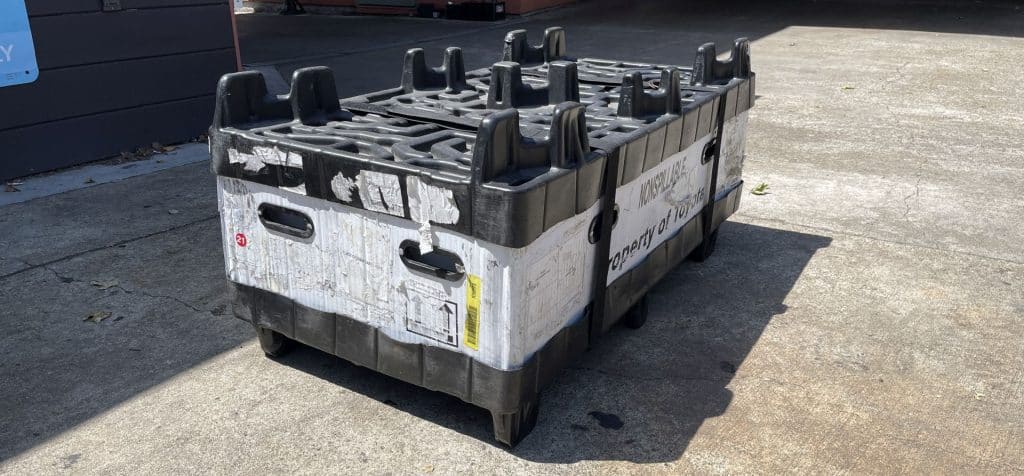
Decades of Experience
We’ve been working on hybrids since they first hit the roads-over 21 years ago. We’ve learned a lot over the years. While many systems have stayed pretty much the same, some have not, and we always keep up with advancements in hybrid and EV systems as the are introduced. Today, hybrid and EV service is our primary specialty, and we’re recognized throughout Berkeley for our expertise in diagnosing and repairing these advanced vehicle.
Certified Hybrid Technicians
Our technicians aren’t just certified – they’re leaders in the field of hybrid repair. Several of our staff have taught hybrid service and repair at the continuing education and college level, and on average, our techs have over 15 years of automotive experience each. When you trust us with your hybrid or EV, you’re getting the benefit of deep technical knowledge and a commitment to ongoing training.
Transparent Pricing
We believe in clear, upfront estimates with no surprises. Our pricing is competitive and straightforward, and we’ll always explain your options in detail – so you can make the best decision for your goals and your budget. Are we always the cheapest? No. But we always try to be fair and estimate accurately so you can make an informed choice.
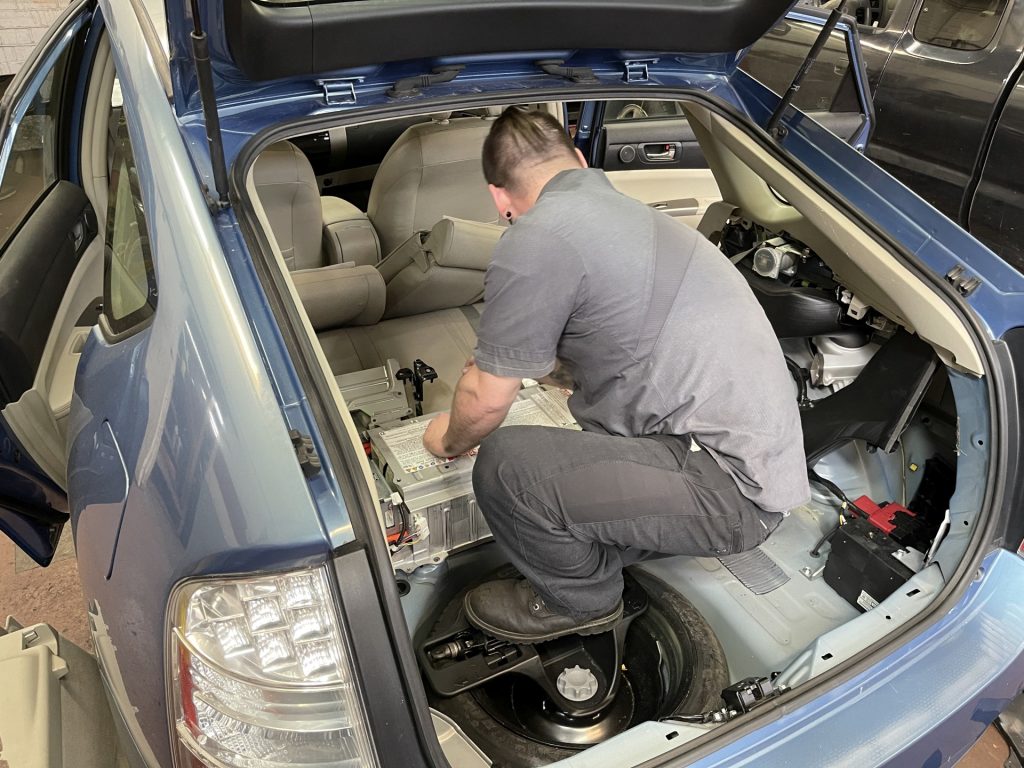
Convenient Berkeley Location
We’re located in West Berkeley on San Pablo close to highway 80 and one mile from Ashby Bart. There are a couple rental e-bike stations nearby and there are often electric scooters around.
How Long Do Hybrid & EV Batteries Last?
How long does a hybrid battery last? Sometimes this worry stops people from buying a hybrid. After all, the batteries in consumer products like cell phones and laptops only last 3 years at best, so I can see why people are concerned. A new car is a big investment, and ideally it would last at least 10 years. But is the battery going to last that long on a new Prius, or is it going to fail, leaving you holding the bag? If you’re worried about hybrid battery life, this article will help.
Your Hybrid Battery Will Likely Last Between 10 and 15 Years
I won’t keep you in suspense. Most hybrid batteries last 10 – 15 years. Mileage seems to be unimportant. We’ve replaced batteries on 12 year old hybrids with only 45K miles, and seen good original batteries on hybrids with 300K+ on the clock. The number one search result on Google claims “100,000 miles”. This is completely wrong. Age matters far more than miles, at least the NiMH batteries most hybrids have been using up to this point.
If there are any readers out there who owned an old Honda hybrid with a 144V battery, they’re probably screaming at their screen. Those were an exception to the rule, and unfortunately they failed frequently.
In the early days I tried very hard to devise a method for predicting how much life a hybrid battery had left. Click the link if you’re interested. As it turns out, it’s pretty easy to gauge capacity and balance, but there’s no way to tell when a battery is going to completely fail, which has always been due to a shorted cell in my experience. The best way to estimate how much battery life remains is pretty simple: 12 years minus years of use = years of life left.
Signs Your Hybrid Battery May Be Failing
Most common sign is a warning light, alerting you there’s a problem with the hybrid system. However there can be more subtle clues. One of the big ones is a decrease in fuel economy.
Your Hybrid battery stores energy that would have been wasted while braking, but it can only do this until the battery is full. Once it’s full there’s nowhere to put the energy. If your battery is old and has less capacity, then it can’t store as much energy, and you lose some of its fuel saving benefit.
Other signs of a failing Hybrid battery are the battery cooling fan running all the time and the engine revving more than normal when driving. However these symptoms are usually accompanied with a warning light.
Hybrid Battery Replacement Costs
For a while, we tried to maintain a web page with the prices we charge for a new hybrid battery on several popular models, but post COVID inflation has been crazy the it became a chore. If you’d like a price to replace your hybrid or EV battery, please call or email and we’ll send you a written estimate for your car with current prices.
In 2025 Toyota and Lexus went momentarily crazy with battery prices, but luckily (at least for people who didn’t buy a battery while the prices were high), the battery prices came back down to normal a few months later.
Now, what makes some hybrid and EV batteries expensive and some affordable? It’s mostly about size. You’re paying for battery capacity. Hybrid vehicles typically use smaller, lower-capacity NiMH battery packs. Why? Because the primary purpose of a hybrid vehicle is to recapture energy using regenerative braking. Using a bigger battery will improve fuel economy to a point, but after that it’s not worth the additional vehicle cost (and battery replacement cost).
Plug-in hybrids typically have larger more energy-dense Lithium batteries. A battery for a plug-in typically has about 15 times more capacity and will be substantially more expensive than a traditional hybrid battery. These batteries do more than just capture braking energy, they can power the vehicle in EV mode for 10 – 60 miles.
You probably guessed what’s next. An EV typically has a range of 200 miles or more and an EV battery pack replacement will cost a lot of money. An EV pack is equal to 90 hybrid batteries, or 6 plug-in hybrid batteries according to Lexus, which manufactures all 3 variants of vehicle.
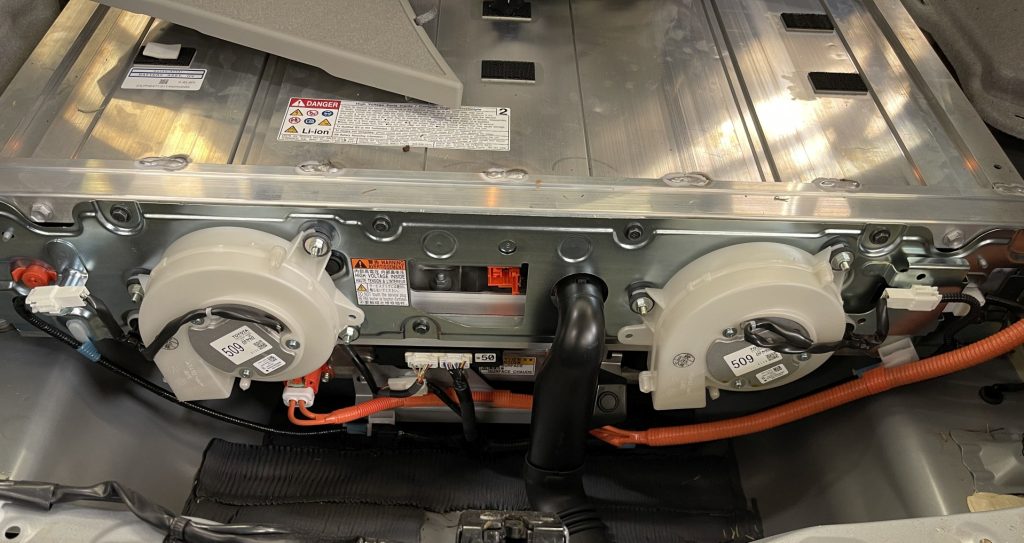
Can Hybrid and EV Batteries Be Repaired / Rebuilt / Refurbished?
Hybrid battery repair is something that’s held interest for me since the early 2000s. When Toyota introduced the Gen 1 Prius in 2001, Berkeley streets were flooded with them. A lot of our customers purchased gen 1 Priuses, and once we proved we were pretty good at fixing them, we gained many more new Prius customers. Back then it was my hope that one day I would be repairing and rebuilding Hybrid battery packs. As it turned out, replacing cells and reconditioning just aren’t viable options, much to my dismay. I love fixing things. Replacing things isn’t anywhere near as satisfying.
Dorman Remanufactured Hybrid Batteries
Are Dorman hybrid batteries any good? Well, they’re probably the best reman battery you could possibly buy, but they’re not good at all. Why? For the reasons I outline above.
I had a conversation with the lead engineer for Doman battery reman program at Sema one year. Super nice guy. Very knowledgeable. He explained their remanufacturing setup which sounded amazing. Automated capacity testing and sorting. I doubt anybody else in the game has the same level of equipment and expertise.
When we started talking one of the first things he said was, “You’ve probably had some issues with our product, but we’ve been working on it and it’s getting much better”. Their main issue at the time was electrolyte leakage from the terminals and the threaded insert in the bottom of the batteries used to connect the battery to the case. They had found methods to address both issues. The topic he avoided was age related cell shorting, and I don’t think there’s any way to correct that issue short of using new batteries.
How Much Does It Cost to Repair or Rebuild a Hybrid Battery?
If someone held a gun to my head and said I had to get a reman battery, I’d buy a Dorman. But how much less would it be than buying a new battery from Toyota? On Amazon, the Dorman part number 587-001 is $1644 with shipping. A new Toyota battery part number G9510-47033 is $1950.You save only $306. And if you check the reviews, you’ll find 50% of them are negative citing failures within two year of purchase. If you buy a new Toyota battery, it’s going to last as long as the original, and that will probably be the rest of the car’s life.
Here’s Why My Dream of Fixing Hybrid and EV Battery Packs Died
There are two problems with refurbished replacement hybrid batteries. The first problem is that all batteries lose capacity over time. Just like your phone and laptop, your hybrid’s battery will be able to store less and less energy as it ages. This will decrease your fuel economy. Since all refurbished batteries are made with used cells, all refurbished batteries will have reduced capacity.
The second issue is spontaneous failure. The most common hybrid battery failure is a shorted cell. This usually occurs after the battery has been in service 12 years or more and is completely unpredictable. There’s no way to determine if a cell will short in the near future. Since refurbished batteries are made from old used batteries, the odds are very high a cell will spontaneously short.
Even companies with great knowledge and the absolute best practices haven’t been able to make battery rebuilding reliable and profitable. A great example of this is Dorman, who used state of the art automated processes to grade and sort matching batteries to assemble into a well-balanced pack, couldn’t get it work without excessive warranty issues.
And most of the people in the battery reconditioning business are nowhere near that sophisticated. Locally we had some odd businesses in the game. One was an upholstery shop and the other a junkyard. They were “rebuilding” HV batteries using RC battery chargers, headlights for a load, and voltmeters. Not surprisingly, they weren’t able to make a reliable product and dropped out of the business, leaving many owners with worthless 3-year warranties and a need for a new battery.
A Cautionary Tale
We had one customer come in for diagnosis of a master warning indicator on his Prius. It was a bad battery. As it turns out, the battery had just been replaced. Our customer called the installer and they agreed to install a new battery. Cool.
A couple months pass. He’s back again with a warning light. P0A80 again. We started to check it but stopped looking once we found a battery code. The installer put another refurbished hybrid battery in the car.
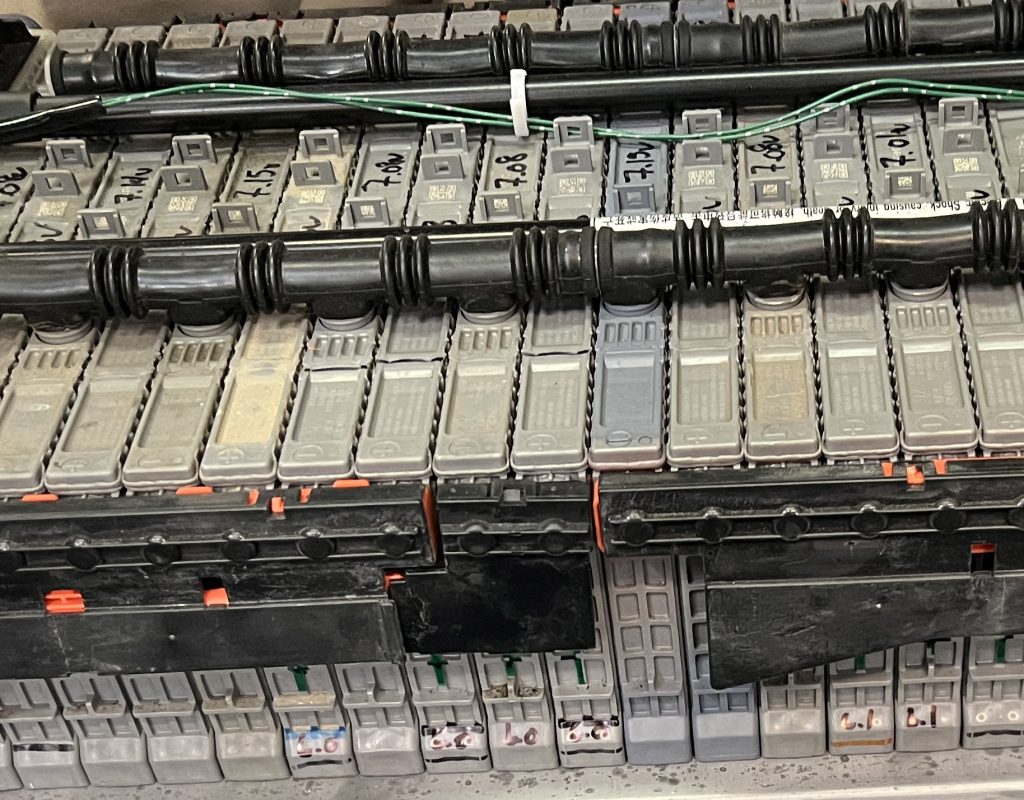
A few month later you’ll never guess what happened.
This time he decided it wasn’t worth the hassle. The Prius was only getting 29 MPG with the reconditioned battery and our customer was tired of bringing the car in every few months. We installed a new battery from Toyota. Now he was getting 44 MPG and the new battery will last at least 10 years, just like the original.
What makes Hybrid Battery Repair Challenging?
First, a little background. “High voltage” batteries are made up of low voltage batteries connected in series. Each battery is connected positive to negative. When batteries are connected in series, the total pack voltage is equal to the sum of the individual low voltage batteries added together.
The images and explanations below are taken from one of our pages on 12V batteries, but the concepts are the same. The only difference is that a 12V battery has just a few low voltage cells and a hybrid or EV battery will have over 100 cells.
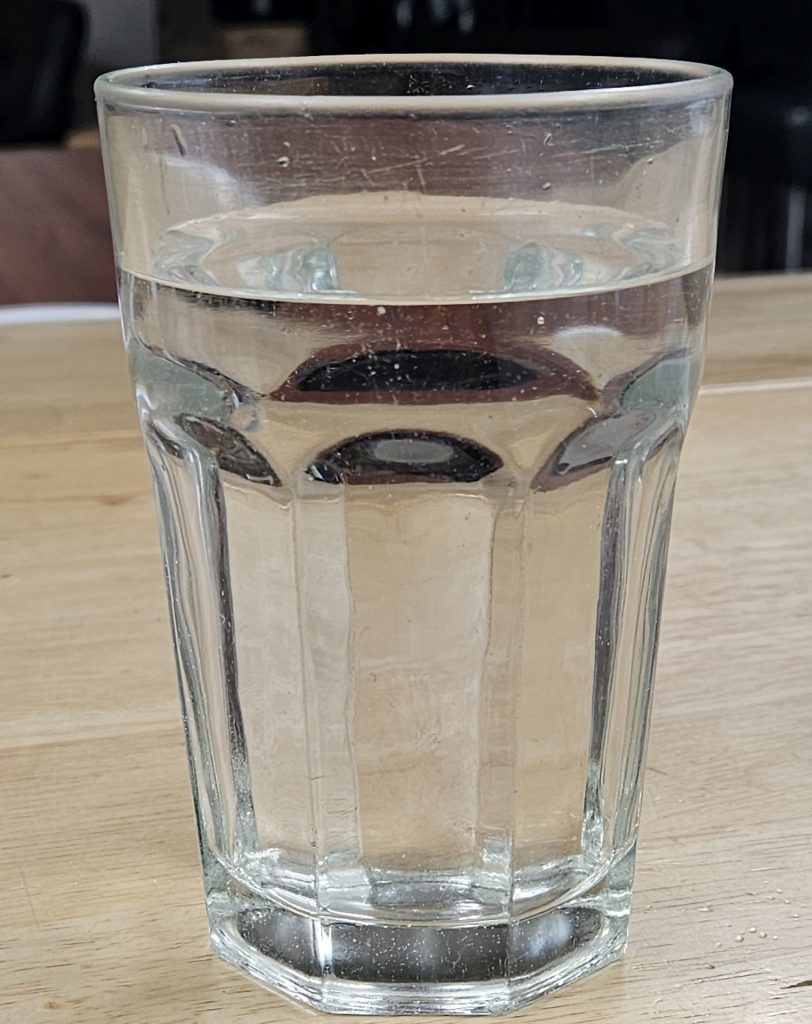

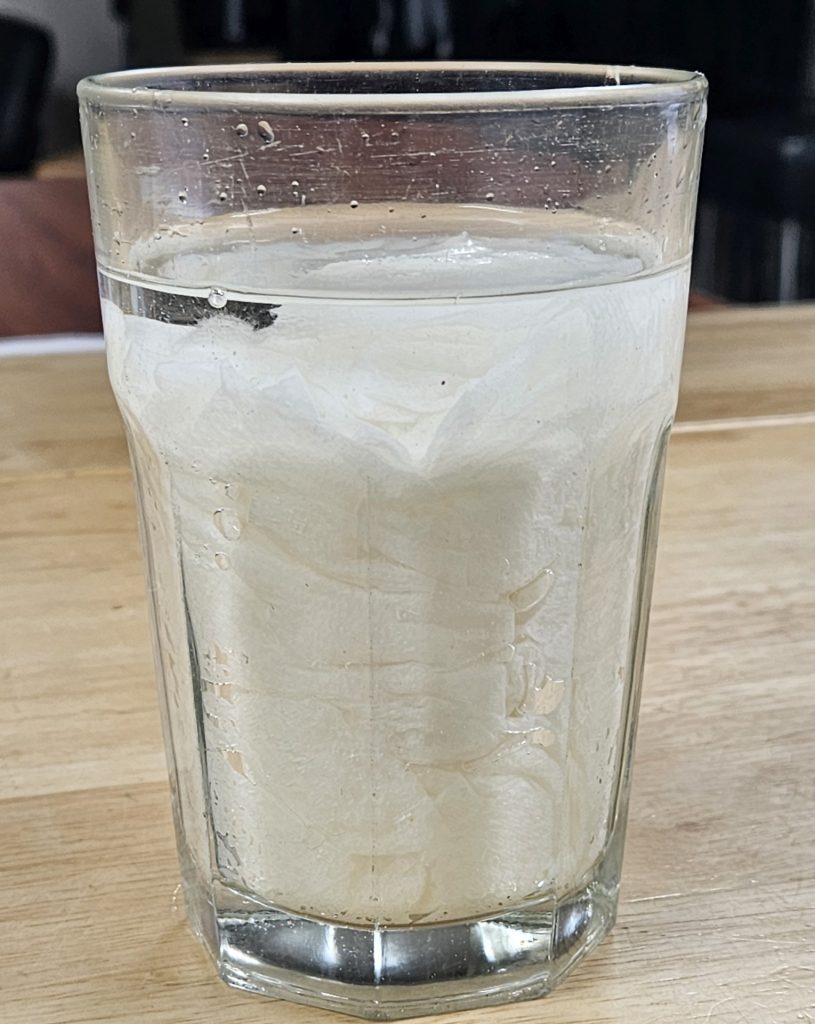
State Of Charge
Once connected together, the state of charge of the individual low-voltage batteries cannot be altered separately from all of the batteries in the pack. Once connected, the pack can only be charged and discharged as a unit.
Why does this matter? Well let’s imagine building a battery pack. What would happen if some of the low0voltage batteries were fully charged and some were completely discharged when we assembled the pack? If we tried to charge the pack, the fully charged batteries would overcharge and overheat. If we tried to discharge the pack, the discharged batteries would over discharge and be damaged. This is one of the challenges. All of the batteries in the pack must have an exactly equal state of charge, but this is doable.
Battery Capacity
Another challenge is battery capacity. Each battery in the pack must have the same capacity. Batteries over time lose capacity. You’ll know this from your experience with phones and laptops. When new, the battery might last two days. After 3 years you may need to charge multiple times per day.
The battery capacity issue is very similar to the battery state of charge issue. A battery with lower capacity than others in the pack will fill quicker. Likewise it will discharge quicker. This will cause it to overcharge and over-discharge once its linked to the pack. You can’t simply buy a new battery and add it to an existing pack. (And manufacturers don’t sell new individual batteries for exactly this reason)
So, if you had a hybrid battery where one of the low-voltage batteries had failed, you’d need to find a used battery that matched the capacity of the other batteries in the pack exactly. This issue can be overcome by testing and matching the capacity of all of the batteries you intend to assemble into a pack.
Cell Shorting: The Most Common Cause Of Hybrid Battery Failure
Here’s the real reason you can’t, or rather shouldn’t, repair a hybrid battery pack. Hybrid battery packs fail when a cell in one of the low voltage batteries shorts. This failure is impossible to predict. There are no diagnostic tests that will reveal that a cell is close to failure. One day it’s fine, the next it’s dead.
You might think, “So? I’ll just test used batteries until I find one with matching capacity, match it to the packs state of charge and save thousands”. And you wouldn’t be alone. Thousands of businesses tried the same thing, from a local upholstery shop, to wrecking yards, to manufacturing giants like Dorman, all with varying degrees of technical expertise and equipment. They all share one thing in common: failure.
What is the Life Expectancy of a Used Hybrid Battery
Here’s the thing about cell shorting. It seems to be mostly an age related fault. The car’s mileage isn’t a good predictor. A cell might short at 50,000 miles or 300,000 miles, but age is a pretty effective predictor. The NiMH batteries in the first three generations of Prius usually last between 12 and 15 years. There are outliers, but most fail within that window.
So, when you go to the trouble of repairing your hybrid battery, it’s pretty likely that on of the other batteries in the pack will fail shortly after. You’ll end up playing whack-a-mole until you give up and buy a new pack.
Battery Leakage
The other issue is electrolyte leakage. You know how your 12V battery terminals start to get crusty when the battery gets older and require constant cleaning? The same thing happens with hybrid batteries. This creates a host of issues. One is corrosion which will eat through wiring on the battery. The other is loss of isolation, which is beyond the scope of this article, but here’s a link to an article I wrote for ToyotaTech on the subject.
Is Hybrid Battery Reconditioning a Real Thing?
Is it worth it to recondition a hybrid battery? What is reconditioning? Will if repair a failed battery?
Battery reconditioning is a real thing, which doesn’t necessarily mean you should be doing it, but it is real and will probably offer some benefit. The best reconditioning system was developed by Dr. Mark Quarto. He was one of the engineers on the GM EV1 project, the “Who Killed The Electric Car” car. Super smart guy. He knows far more about hybrids and EVs than I ever will. If you’re in this field and have an opportunity to take one of his classes, do it.
Now, back to reconditioning. Here’s the idea. As I mentioned earlier, when a pack is connected in series, all the low voltage batteries are charged and discharged together. Over time the batteries can get out of “balance” and their state of charge can drift apart. Mark’s machine requires removing the bus bar and connecting leads to the positive and negative cable of each individual battery. The device then does capacity testing, balances the pack, and maybe some other secret sauce stuff as well. It has been at least 10 years since I last talked to him about it.
These devices are sold to auto repair shops, or at least used to be, and there is also a franchise business called The Hybrid Shop that offers (or offered) this service at many locations. Their website seems to be broken, so they may not exist anymore.
Now, should you do it? Probably not. I recall the pricing being quite high. While the process may offer some benefit, I think the cost is disproportionate to the value.
Can Hybrid Batteries be Serviced?
Is there any preventative maintenance you can do to make your hybrid battery last longer? Well, there’s no way to top up the electrolyte or anything like that. The car’s battery management system will do it’s best to keep the battery healthy automatically. The one thing you can do if your battery is air cooled (most hybrids are) is to keep in cooling inlet vent filter clean (if it has one). On hot days use the A/C to keep the cabin at a reasonable temperature. If you have warning lights, have them checked. Finally, drive your hybrid regularly. That’s about all you can do. There is no other battery service needed.
Can You Still Drive if a Hybrid Battery Fails?
As I mentioned earlier, the most common type of failure is a shorted cell. When a cell shorts in an individual battery, the entire pack is brought down to the level of the battery with the shorted cell. This may cause several issues for Toyota hybrids, but the car can still be driven.
Here’s what you’ll likely notice. The battery cooling fan running all the time. Low power. The engine running all the time and revving higher than normal when driving. A dramatic drop in fuel economy. And finally, very low power when driving in reverse or a long delay before being able the back up. You may also struggle with hills, especially if you need to back up a hill.
So in short, yes, you can drive with a bad hybrid battery most of the time, but you’ll probably want to get the battery fixed.
Can I Replace a Hybrid Battery Myself?
You’re probably expecting me to talk about the dangers of high voltage and tell you to leave it to the professionals. I’m not gonna do it. Can you replace your hybrid battery? Maybe. You probably know better than me. Get a 3 day subscription to Toyota’s technical information website. Read the instructions. Watch some YouTube videos. (Remember that not everyone on YouTube is qualified, although many are.)
If replacing the hybrid battery seems like something you can do, go for it. It should be because you like doing projects though. The first time doing anything will take a while. Allow for mistakes and learning. Also, most shops won’t be interested in taking in a basket case, so if you commit, commit.
How to Start a Hybrid Car With A Dead Battery
This is really two questions. Hybrids have at least two batteries, a 12 volt auxiliary battery and a high voltage traction battery. If the 12V battery is dead, you’ll just need to jump start the car or recharge the battery. Check out this article on how to jump start a Prius.
Now, if the high voltage battery is discharged, you’ll probably need some expert help. We have a custom high voltage charger for just such occasions. Here’s an article about charging high voltage hybrid batteries I wrote for Import Service magazine if you’re interested.
Are Hybrid and EV Batteries Recycled?
Frequently when I tell people what I do, they’ll start in about how all the battery packs are toxic waste and it’s going to pile up and ruin the planet. This simply isn’t true.
NiMH batteries contain Lanthanum, Cerium, Neodymium, and Praseodymium. Originally I assumed that this is what would make batteries worth recycling, but apparently I was wrong. It appears that the nickel found in hybrid batteries is where most of the value lies. If you’re interested in learning more, here’s a link to Cinco, a company that recycles all types of batteries, including hybrid and EV batteries.
The core charge for a Toyota battery is $2000, which exceeds the cost of the new battery. Toyota is making sure that its batteries are recycled by making sure the old battery is returned to them.
Hybrid Battery Diagnostics: Is It Time for a Replacement?
Does a warning light or trouble code P0A80 automatically trigger a hybrid battery pack replacement? According to the service information, P0A80 is defined as, “Replace Hybrid Battery Pack”.
The code definition seems pretty clear, and you might think there’s nothing left to do but to follow its “instructions”. But like all things automotive, there are no absolutes. You must do the testing and come up with your own conclusions. You can’t rely on the car’s self-diagnostic functions to tell you what’s wrong. That day may come, but it’s not here yet. Unless you like replacing expensive parts only to find out it was unnecessary, do your due diligence.
What causes P0A80?
What causes P0A80 on a Toyota is different than what causes a P0A80 on a Honda. Why? This is probably a question better answered by an automotive engineer, but as I understand it, SAE (Society of Automotive Engineers) produces a list of standard trouble codes with various meanings. In the case of P0A80, the code’s meaning is “replace the hybrid battery pack”.
On all of the Toyota hybrids I’ve seen, P0A80 sets when one battery block has a lower voltage than the others, and so far, it has always been due to a shorted cell in that block. When a cell shorts, there is no alternative; you’ll need a replacement hybrid battery.
A hybrid battery primer (in 6 sentances)
So, what are blocks and what are cells. A block is a group of cells that are monitored by the battery ECU. On many Toyota hybrids a block is a group of 12 cells.
A cell is the smallest unit of the battery. Its voltage is determined by its chemistry. For instance, a NiMH cell has a nominal voltage of 1.2, whereas a lithium cell will have a nominal voltage around 3.6V.
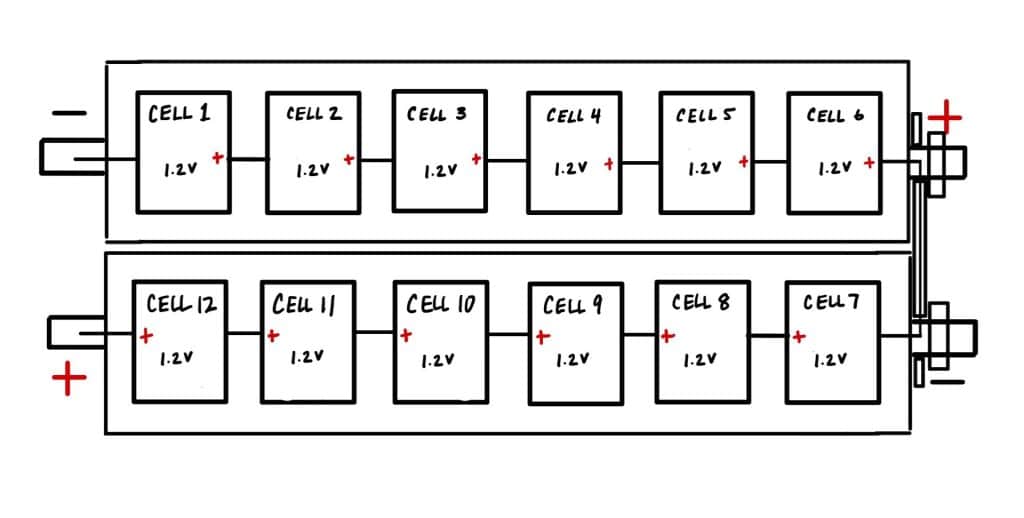
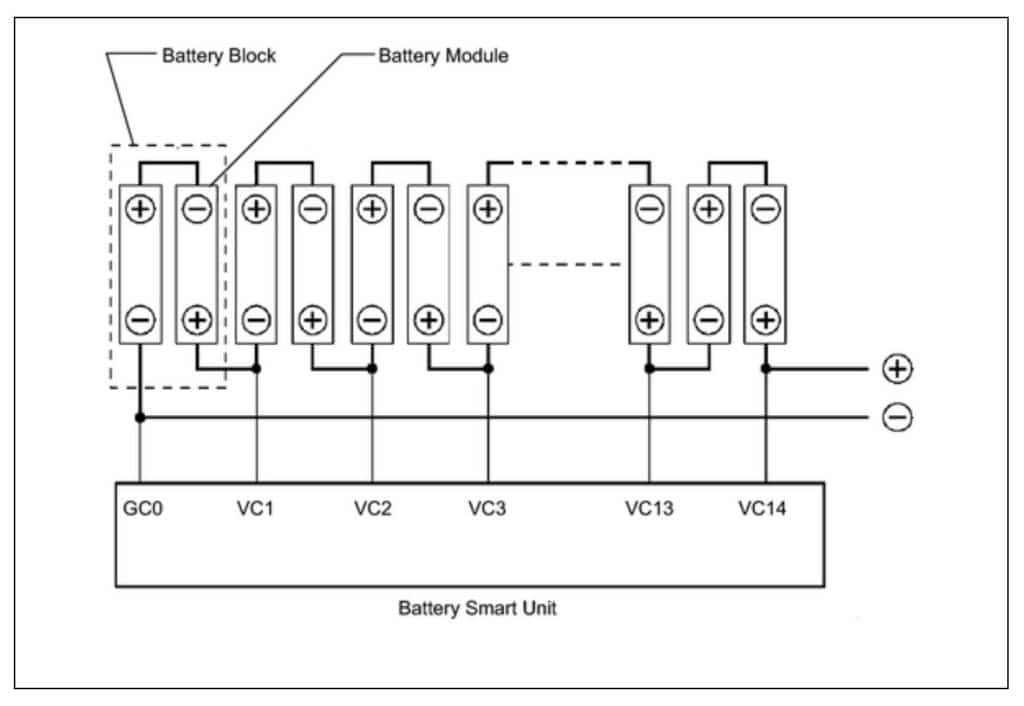
(Image courtesy of Toyota North America)

What does the battery ECU look for?
The battery ECU measures the voltage of each block and looks for differences in voltage. When the battery is being loaded, the voltage in weaker cells will drop more than the voltage in stronger cells. A shorted cell will produce 0V, so a block with a shorted cell will be about 1.2 lower than the other blocks. The battery ECU will notice this and set a P0A80.
A P0A80 can also set due to a fault with the A/D (analog/digital) converter in the battery ECU. When this happens there will be an alternating pattern of high and low block voltages in the freeze data. I haven’t seen a battery ECU fail in this way, but I have seen battery ECUs fail in other ways, always with different codes.
Toyota P3011 – P3024
Toyota also uses P30xx codes to flag hybrid battery failures. Each code in this range refers to a particular battery block. For instance, P3017 indicates a problem with block 7. Basically, you just subtract 10 from the number in the trouble code and then the last two digits are the number of the block. On models other than the standard Prius with more than 14 blocks, the codes continue to P3025 and beyond.
P3011-P3024 are sort of the opposite of P0A80 on Toyota. A weak cell will have a lower voltage under load than a good cell. However, while being charged the opposite is true. A weak cell’s voltage will climb higher than good cells voltage while being charged. The battery ECU is watching the block voltages, and if it sees a block’s voltage climb higher than the others beyond a certain threshold, it will set a P30xx code.
While a P0A80 usually sets when a block’s voltage is over a volt lower than the others, a P30xx can set when a block’s voltage is only 0.3V higher than the others. P0A80 usually sets while the battery is under load. P30xx always sets when the battery is being charged with regen or with the MG1.
P0A80 on Honda
I’m not as familiar with Honda’s hybrid batteries. Honda made terrible hybrids in the beginning and they’ve kind of killed their market share. We saw a fair number of the Gen1 Insights, Civics, and Accords back in the day, but most have made their way to the great junkyard in the sky by now. In contrast, we still have three to five 2004-2009 Priuses come in daily.
When Honda came out with some cars that had seemingly good designs, nobody bought them. “Fool me once” I guess. I do occasionally read the service manuals for fun. (I know. I’m always popular at parties.)
P0A80 on the 2019-2022 Insight has nothing to do with the block voltages. Instead, it looks like a check to see if the correct battery is installed. Here’s what the manual says:
“The battery pack built in resistance for battery module identifications are used for the battery condition monitor module to monitor whether an appropriate battery module is connected. If the battery pack resistance voltage for battery module identifications are out of specified value for a set time, the battery condition monitor module detects a malfunction and stores a DTC.”
Basically, there’s a resistor in the battery pack. The battery ECU checks to see if it’s the right value and if it’s not, Honda wants you to replace the battery pack. Why bother? I don’t know. Maybe it’s a low-budget attempt at serialization ala Apple and John Deer? They engineered the world’s worst hybrid battery pack and then maybe they got grumpy when nobody bought replacements from them? The ink jet printer business model had failed them, but never again. Ok. I’m done teasing Honda.
P0A7F – Hybrid battery pack deterioration
P0A7F is the other SAE hybrid battery code. What’s the difference between P0A7F and P0A80? Once again, it depends on the make of the car. P0A7F is a generic code, and the individual manufacturers can decide what conditions should cause it to set.
Toyota P0A7F
I was trying to remember last time I had seen a P0A7F on a Toyota. P0A80 and P30xx are far more common. A quick search of our database did reveal two Gen2 Priuses that had a P0A7F stored, but both also had a P0A80.
Toyota’s description of the P0A7F monitor sounds pretty much identical to the monitor for P0A80. The only difference is that they talk about internal resistance of the battery blocks rather than the voltage of the battery blocks. In my mind this isn’t much of a distinction.
The sensors monitored for P0A7F are block voltages and the current sensor. There is no “internal resistance sensor.” Resistance is determined with block voltages, current flow, Ohm’s law, and computing. Voltage for P0A80 and P30xx is monitored using the same sensors.
Whatever the difference is between P0A7F and P0A80/P30xx, it’s all in the battery ECU’s mind. It could be the P0A7F is a milder version of a P0A80. P0A80 requires a block voltage difference of over a volt. It may be the P0A7F will set under load with less of a voltage difference. Since it sets so infrequently on Toyota, I may never get the chance to find out.
Honda P0A7F
Honda hybrids frequently set P0A7F, along with P1443, P1447, P1449, P144A, P1DC7.
On older Honda models, the service information states that P0A7F sets when the battery capacity has decreased below an acceptable threshold. No real details are given other than the ECU is monitoring the pack voltage and current to make this determination. That makes sense though. Draining a battery while monitoring voltage is how a battery’s capacity is determined.
On newer Hondas like the Insight, the service information says P0A7F is just a generic code and will set along with P144A and P1DC7.
Honda P144A
Hybrids don’t use their full battery capacity. By not fully cycling the battery the battery will last longer. This is important to know when trying to understand the P144A chart to the right.
I actually really do appreciate Honda for including this kind of information in their advanced diagnostics section. It’s nice to have an idea of what the ECU is looking for.
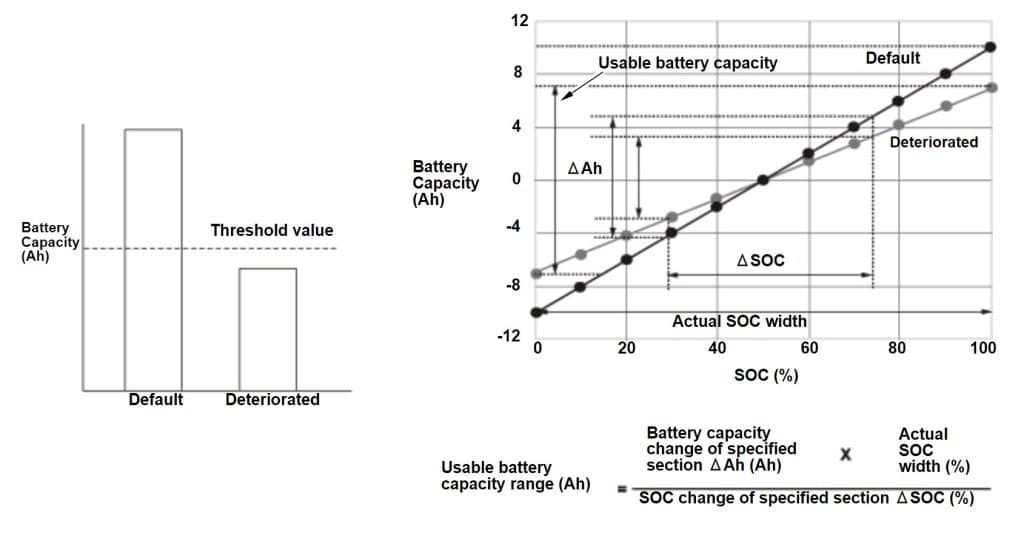
Honda P1DC7
Honda P1DC7 is like a combination of P31xx and Toyota’s version of P0A80. The battery ECU monitors block voltages under load and charge. If a block is excessively low under load or high under charge, the ECU knows that the block is weak.
This chart and additional information can be found in the advanced diagnostics in Honda service information.
Refurbished hybrid batteries
Whether you call it a reconditioned hybrid battery, rebuilt, or reconditioned, it amounts to the same thing – a used battery pack with less capacity than a new battery (meaning a big drop in your MPG) and a VERY high chance of complete failure.
We strongly recommend against using refurbished hybrid batteries.
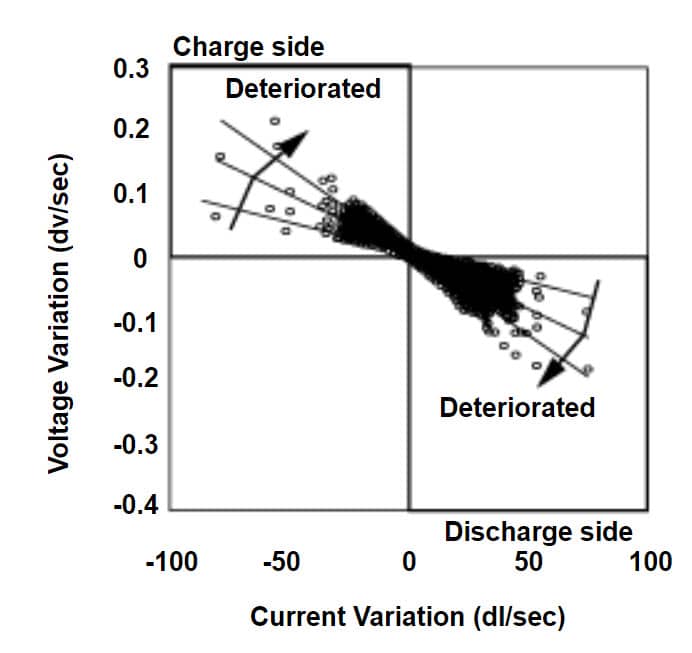
Hybrid & EV battery Replacement in Berkeley
If you’re looking for a hybrid repair shop with expertise in hybrid battery diagnosis and hybrid battery pack replacement and live near our Berkeley location, please give us a call.
Otherwise, I hope you found this information useful and that helps you understand what might have caused your P0A80.
Other reading
What happened to Toyota HV battery pricing in 2025!!!
Our Primary Auto Repair Services & Other Collections
Below are links to some of the other automotive maintenance, repair, and diagnostic services we offer at Art’s Automotive, including a link to our services page, which is a collection of articles explaining all of the services we provide. We also have a collection of articles about our shop and how we do business and a collection of informative blog type articles we’ve written over the years.
Car Electrical Repair in Berkeley – Art’s Automotive
Art's Automotive provides fast, accurate diagnosis and repair of all types of car electrical problems. We serve Berkeley and the nearby cities Oakland, Emeryville, El Cerrito, and Richmond. Not only...
Mazda Service & Repair In Berkeley – Art’s Automotive
Art's Automotive has been servicing Mazda vehicles in Berkeley for over 40 years now. Mazda isn't our biggest brand, but they're popular in the Bay Area and they make some...
Honda service & Repair in Berkeley – Art’s Automotive
At Art’s Automotive, our goal is to keep your Honda running reliably and your costs low by providing an intelligent service plan and fairly priced repair. On this page, you’ll...
Toyota Service & Repair in Berkeley – Art’s Automotive
If you're looking for a shop in Berkeley to service your Toyota, this page will give you an idea of what to expect at our shop, and explain what we've...
Subaru Service & Repair In Berkeley – Art’s Automotive
Whether you're one of our customers in Berkeley or just someone researching the service and maintenance needs of your Subaru, we hope you'll find this article useful. It's our honest...
Car Service & Maintenance Explained | Art’s Automotive Berkeley
During our 40+ years in Berkeley, we’ve learned a lot about what car service & maintenance is critical, and what service items can be postponed relatively safely if money is...
Hybrid Service in Berkeley, East Bay | Art’s Automotive
Are you looking for hybrid or EV service, diagnosis, or repair in Berkeley? Art's Automotive is the East Bay's leading hybrid & EV specialist. On this page we'll try to...
